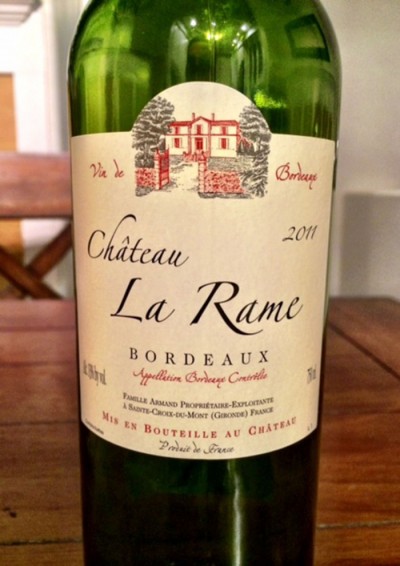Bordeaux is a region in western France that I’m sure you have heard of before but maybe have never felt bold enough to try. Bordeaux is a well-established region that has a rich history that goes back as far as the first century when the Romans were occupying France. Bordeaux is mostly known for its red wines; in fact the word Bordeaux is now synonymous with the idea of a red wine for most people. Fun fact: in 1886, the inspiration for Coca-Cola came from a drink called Vin Mariani, which was a mixture of Bordeaux wine and a sizeable pinch of cocaine that had been popular in France for over 20 years. The temperance movement in the US was opposed to the obvious of the greater evils in Vin Mariani so the wine was replaced with syrups and other additives for the original coke recipe. But I digress. A Bordeaux wine that every newbie wine lover needs to try is Chateau La Rame. The chateau has won gold medals at exhibitions in Bordeaux in 1895 and in Paris in 1900. At $17.99 a bottle the 2011 blend is 60 percent Merlot and 40 percent Cabernet Sauvignon, and in my opinion would taste best with a heavy meal. In this case, something with a nice layer of fat, like a cut of beef or pork, would work best to cut through the tannins (dryness) in the wine. It’s a matter of taste (as is everything when it comes to wine.. ba-dum tsss) whether or not to accompany your beverage with food, but try it solo first then with food and enjoy the differences you can notice. -Jessica
When you think of Bordeaux, you probably immediately think of big, full bodied reds. We know that there are five red grape varietals that make up traditional Bordeaux, and those grapes are Cab Franc, Cab Sauv, Merlot, Malbec, and Petit Verdot. Bordeauxs tend to be very dry, with muted fruit flavors and sometimes more vegetal notes, like mushroom and fig. Sounds fancy, right? It is. But mushrooms and figs aside, no one does Sauvignon Blanc quite like Bordeaux. Sauternes comes from a village in Bordeaux that turned Sauvignon Blanc on its head in the 17th century. The vineyards were taken over by a fungus called Botrytis Cinerea, aka ‘noble rot,’ which attacks the grapes on the vine, turning them into highly sweetened raisins, which when crushed produces a thicker, sweet juice that tastes like apricots and honey. If you’re feeling fancy you can pick up a 375 ml. of Chateau D’Yquem for about $300. It’s known as one of the finest Sauternes on the market, but for about $20 you can snag a very similar bottle of Royal Tokaji’s Mad Cuvée. I recommend a buttery triple cream with fresh berries and the new Decemberists album. -Candace

